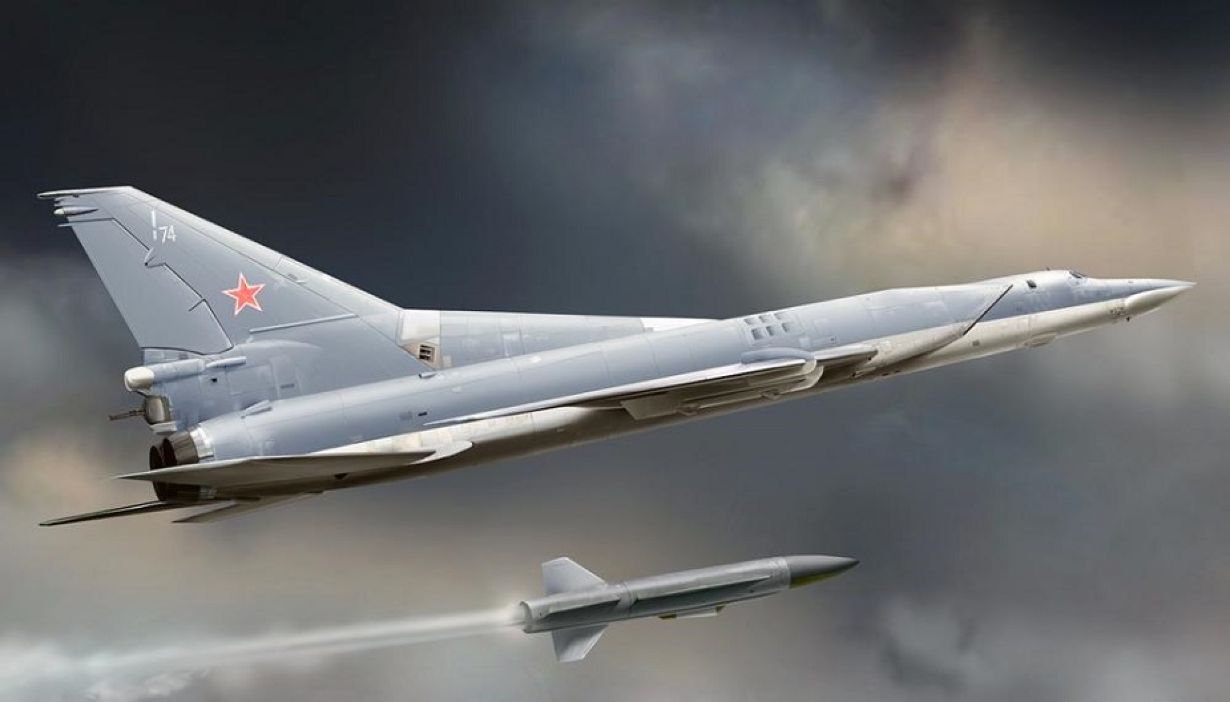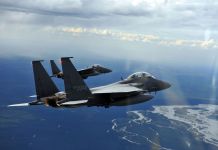Following the massive Russian missile and drone strike on Ukraine on December 29, 2023, Yurii Ihnat, spokesperson for the Air Force of the Armed Forces of Ukraine, stated on a TV show that since the start of the SMO, Russia had launched 300 Kh-22 missiles at Ukraine, none of which were shot down by air defense systems.
“The Kh-22 missile flies at a speed of four thousand kilometers per hour, it enters its target mostly along a ballistic trajectory, so special means are needed to intercept it. We need air defense systems like the Patriot, so it’s not so easy with these missiles. The enemy has used more than 300 of these missiles since the full-scale invasion. In addition to the Kh-22, they also have a modernized version of this missile – the Kh-32. Probably, these missiles were also used today,” he said.
Russia has so far used its Kh-47M2 Kinzhal and Kh-22 missiles to strike high-value strengthened targets such as underground storage depots and command centers.
The Kh-47 is the preferred weapon for precision strikes on targets such as a decision-making center, and the Kh-22, because of its bigger warhead, is the preferred weapon for strikes on area targets such as fuel and ammunition depots.
Kh-32/22 Overview
The Kh-22 missile was developed in the early 1960s to penetrate adversary air defense and destroy large ships (aircraft carriers), military bases, ships, power plants, and bridges.
The Kh 32 is a physically identical updated variant of the Kh-22. The Kh-32 was designed to be carried by the Tu-22M3 supersonic bomber and was accepted into service in 2016. The new missile features a conventional warhead, an improved rocket motor, and a new radar imaging terminal seeker. It has a longer range but a smaller warhead.
The Kh-22 missile seeker operated at fixed frequencies, making it susceptible to radar jamming. The multi-frequency radar seeker of the Kh-32 is less susceptible to radar jamming.
As far as specifications go, the difference between the two missiles is as follows.
|
Kh-32/22 |
Kh-47M2 |
|
|
Weight (kg) |
6000 |
4,300 |
|
Range (km) |
1000 |
2000 |
|
Warhead kg |
500/900 |
480 |
Having explained the difference between the two missiles, I will refer to both missiles as Kh-32 unless I specifically wish to refer to the Kh-22.
In the following paragraphs, I will explain why Ukraine is having a tougher time intercepting the Kh-32 missile as compared to the maneuvering hypersonic Kh-47M2 Kinzal missile.
Flight Characteristics
The Kh-32 cruises at speeds between M 3.5 to M 4.6 (4000 to 5400 kph or 1100–1500 m/s) at altitudes up to 40 km. The missile has a max range of 1000 km and its radar seeker can lock on to its target at ranges varying between 200–300 km.
The missile reportedly has two launch modes.
The Kh-32 can be launched in either high-altitude or low-altitude mode. In high-altitude mode, it climbs to an altitude of 27,000 m (89,000 ft) and makes a high-speed dive into the target, with a terminal speed of about Mach 4.6.
In low-altitude mode, it climbs to 12,000 m (39,000 ft) and makes a shallow dive at about Mach 3.5.
The Kh-32 has three trajectory sections: the launch trajectory section to reach cruising altitude, the cruising section to fly at the 40-km ceiling, and the final one when it nosedives to attack.
Both missiles use accurate inertial navigation to arrive at the target and radar image comparison for terminal tracking. As such, neither missile can be jammed.
Kh-32 vs Kh-47M2 Kinzhal
The Kh-32 is designed to elude adversary air defense (AD) systems by flying beyond their speed and altitude engagement envelopes to the extent possible and then diving onto the target at steep angles. (AD radars are not able to track a target overhead or near overhead.)
The Kinzhal is similarly designed to elude adversary AD systems by flying beyond their speed and altitude engagement envelope. Despite being a significantly smaller and lighter missile than the Kh-22, the Kinzhal has a longer range.
Its ability to fly at hypersonic speeds and maneuver allows it to use a flatter approach trajectory that increases range.
AD Missile Engagement Challenges
Both the Kh-32 and Kinzhal present themselves as aerodynamic targets, not ballistic targets. Their approach speed and height are well beyond the engagement envelopes of NATO AD systems deployed in Ukraine, including the US Patriot systems.
Close to the target, their height comes within the engagement envelope, but their speeds remain well beyond.
AD Missile Engagement Still Possible
Though both the Kh-22 and Kinzhal flight characteristics are beyond the engagement capability of AD radars, it is possible for AD systems to attempt engagement and take their chances. As such, Ukrainian claims of having shot down Russian Kinzhal missiles should be taken with a pinch of salt but cannot be entirely dismissed.
Why Kh-32 Is The Tougher Nut To Crack
The Kh-32 missile is claimed to be completely invulnerable to enemy interceptors and air defense systems because it can withstand hits from a 20 mm rotary cannon or air-to-air missiles.
Hunter – Killer Operations
Perhaps the most outstanding feature of the Kh-32 is its reported ability to exchange target information inflight with another Kh-32.
According to the Russian media, the ability was incorporated in order to outwit adversary air defense when attacking a carrier battle group (CBG).

While attacking a CBG, only one missile switches on its radar seeker to precisely locate the aircraft carrier. Other missiles in the attack package, which may be coming from different directions, remain dark by keeping their seekers off. (If the missile with the active seeker is shot down, another missile in the package can take over the role.)
In the Ukrainian context, operating in pairs, one missile fitted with radar emission sensors could act as a decoy. It would present itself as a target just to pinpoint the location of the AD radar. Having pinpointed an AD radar it could relay the coordinates to the other missile of the pair, which would then dive down almost vertically from very high altitudes and destroy the AD radar.
Ability to Re-Target
The range of the Kh-32 homing warhead is reportedly 200-300 km. In the context of the SMO, it would allow the weapon system operator on the launching Tu-22M to reassign the missile to a target of opportunity, such as a just-identified AD system.
Conclusion
Ukrainians likely fear the Kh-32 more than the Kinzhal because Russian forces have used many more Kh-32s as compared to Kinzhals; the Kh-22 variant, with its 900-kg warhead, is more destructive; and Kh-32s have proven more difficult to shoot down than hypersonic missiles such as Kinzhals and Iskander-M.
As to why Russian forces are not using Kh-32s instead of the more vulnerable and less destructive Kalibrs, the answer is easy – Kalibr cruise missiles are cheaper and can be launched from more platforms – airborne, sea surface, and undersea – than Kh-32s, which can only be launched from Tu-22M3.
- Vijainder K Thakur is a retired IAF Jaguar pilot. He is also an author, software architect, entrepreneur, and military analyst. VIEWS PERSONAL OF THE AUTHOR
- Follow the author @vkthakur




